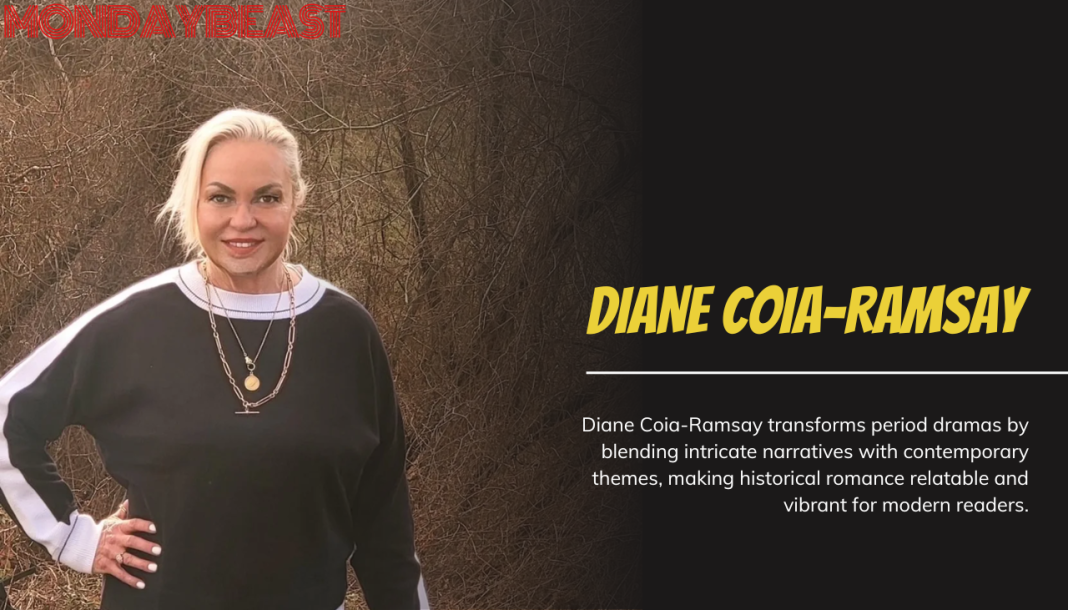Are you tired of the same old period dramas? Do you wish there was something fresh to sink your teeth into? You’re not alone. Modern audiences crave stories that resonate with today’s values while still reflecting the nuances of a bygone era. Diane Coia-Ramsay has heard those calls and is answering them with style.

In the landscape of literature, classic tales often reign supreme. However, the charm of Jane Austen and the Brontë sisters may not quite satisfy today’s readers. They seek something more—a sprinkle of humor, a dash of eccentricity, and romance that feels real. Diane acknowledges this shift and aspires to fill that void, bringing laughter and love back into the fold of historical romance.
The surprising success of shows like Bridgerton proves Diane’s theory correct. With plotlines that break from typical clichés, this series portrays a Regency era that defies conventions. Beautiful ballrooms buzz with excitement as diverse characters mingle and wrestle with desires and ambitions. Do these updates and modernizations represent the future of the genre?

Diane Coia-Ramsay believes that the path forward requires innovation. With familiar plotlines molded to fit fresh narratives, she sees a world bursting with possibilities. Factor in the complex character arcs and nuanced dialogues, and it’s clear why readers feel a pull towards such modern storytelling.
In her own works, particularly the Loving Leopold trilogy, she explores grief, desire, and self-discovery amidst Victorian London. The story is rich with emotion, and it asks deeper questions about love and happiness. What does a ‘happily ever after’ really mean in a world that doesn’t fit neatly into a box?

Diane highlights the importance of authenticity in character development. Her female characters command attention and offer relatable experiences. No longer are they mere muses or projections of a simpler time—they’re multifaceted women who reclaim their narratives. Does this represent a broader cultural shift?
Her dream is ambitious: to adapt Loving Leopold for the screen. Imagine every episode teasing out the intricate layers of Victorian life. Each scene is a glimpse into a world crafted with care, from props to dialogue. There’s something enchanting about both the past and present intertwining, creating a rich narrative tapestry.
In an era buzzing with genre experimentation, it can feel overwhelming. Diane suggests that we engage with both history and aspirations by saying, ‘We all know the formula: a romance that ends with a kiss. But then what?’ Her stories encapsulate the full spectrum of human experience, showcasing the trials and tribulations that lead to real growth.
As the audience grows hungry for more, Diane embodies an effort to reshape romance in literature, giving it a renewed vigor. She’s a beacon for writers and readers aiming for authenticity paired with imaginative flair. What does the future hold for period dramas? The answer may lie in grasping the magic of storytelling while holding onto the heart of human experience.
Period dramas, once linear and predictable, are evolving. With voices like Diane’s echoing through the pages, we can expect more complex narratives to grace our screens and bookshelves. She asks us to embrace the imperfections of life, reminding us that the journey is just as important as the destination.
Through Diane Coia-Ramsay, romance blossoms anew. The past is no longer distant but rather a vibrant backdrop for contemporary issues. Readers find themselves not just spectators but active participants in tales that inspire, challenge, and awaken the heart. How will this affect the genre in the long run? Only time will tell, but one thing is clear: we’re in for a riveting ride.




